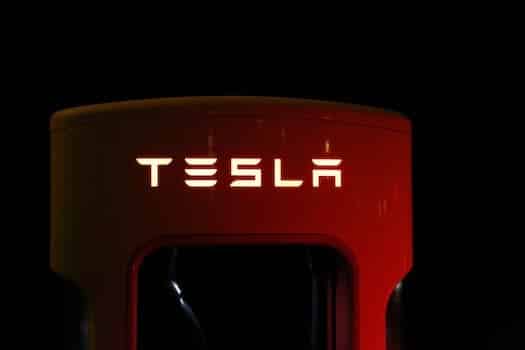As commuters become increasingly conscientious of their environmental impact, demand rises for public transportation solutions that minimize this impact. In addition to lowering greenhouse gas emissions, sustainable transportation strategies also encourage healthier lives and provide accessibility to transportation for all. This article will discuss several prospective public transportation choices that are both environmentally beneficial.
- 1. Introduction
- 1.1. The importance of eco-friendly public transit options
- 1.2. The benefits of using eco-friendly public transit
- 1.3. The impact of traditional transportation on the environment
- 2. Electric Vehicles
- 2.1. Overview of electric vehicles
- 2.2. Types of electric vehicles
- 2.3. Advantages of electric vehicles
- 2.4. Challenges and limitations of electric vehicles
- 2.5. Examples of cities with successful electric vehicle programs
- 3. Bicycles
- 3.1. Overview of bicycles as public transit
- 3.2. The benefits of cycling
- 3.3. Types of bicycles used for public transit
- 3.4. Challenges and limitations of cycling as public transit
- 3.5. Examples of cities with successful bicycle programs
- 4. Public Transportation
- 4.1. Overview of eco-friendly public transportation
- 4.2. Types of eco-friendly public transportation
- 4.3. Advantages of eco-friendly public transportation
- 4.4. Challenges and limitations of eco-friendly public transportation
- 4.5. Examples of cities with successful eco-friendly public transportation programs
1. Introduction
Eco-friendly public transportation has risen in popularity as a result of rising environmental awareness and the pressing need to cut down on carbon emissions. In addition to providing a more environmentally friendly mode of transportation, the environmental benefits of these sustainable options include a decrease in traffic and an increase in air quality. In this piece, I’ll discuss some of the most eco-friendly forms of public transportation and the ways in which they help local communities and individuals.
1.1. The importance of eco-friendly public transit options
Modern cities can’t function without public transportation networks. The need for environmentally friendly and cost-effective public transportation is increasing as urban areas expand to accommodate more people. As a means of lowering carbon emissions and fighting climate change, environmentally friendly public transportation solutions have received more attention in recent years. Electric buses, hybrids, and renewable energy–powered trains, such wind and solar, are some examples. Cities can lessen their impact on the environment by encouraging the usage of eco-friendly alternatives.
1.2. The benefits of using eco-friendly public transit
There are many positive outcomes for both people and the planet when people use eco-friendly public transportation. It has financial benefits for individuals as well as environmental ones by decreasing air pollution and greenhouse gas emissions. Commuters and tourists alike can find eco-friendly public transportation choices to be a practical and sustainable option because they typically include comfortable, modern cars and convenient routes and schedules.
1.3. The impact of traditional transportation on the environment
Traveling by airplane or car has a huge carbon footprint compared to other modes of transportation. Air pollution, greenhouse gas emissions, and oil spills are all made worse by these transportation options. Congestion caused by the use of conventional modes of transportation not only wastes time for drivers but also contributes to pollution and greenhouse gas emissions. Therefore, research on environmentally preferable and long-term transport alternatives is essential.
2. Electric Vehicles
In recent years, electric vehicles have gained popularity as an alternative to conventional gas-powered automobiles. Electricity is stored in batteries and then used to power an electric motor in these vehicles. They are environmentally beneficial because they don’t release any harmful gases during operation. Sustainable transportation options like electric buses and trains are gaining popularity in cities all around the world. They are effective at cutting down on both carbon emissions and noise pollution. As technology improves, electric vehicles become more practical and economical for widespread use in public transportation.
2.1. Overview of electric vehicles
Consumers concerned about the environment and looking for a long-term mobility option increasingly favor electric automobiles. Because their motors are electric and run on rechargeable batteries, these cars are completely pollution-free and much cheaper to operate than their gasoline-powered counterparts. Compact automobiles, sport utility vehicles, and even commercial trucks are now available as electric vehicle options, expanding their usefulness. Increasing numbers of charging stations make electric vehicles a viable option for greener public transportation, and the technology is getting better.
2.2. Types of electric vehicles
Different varieties of electric cars offer their own sets of benefits. Here are some of the most frequent varieties of electric cars:
First, there are BEVs, or battery electric vehicles, which rely entirely on an electric motor and can be recharged. They can travel up to 300 kilometers on a single charge and produce no exhaust emissions.
Second, PHEVs can run on either gasoline or electricity; they combine a gas-powered engine and an electric motor. Although their batteries are less powerful, their gasoline power gives them greater range than BEVs.
Third, there are EREVs, or extended-range electric cars, which are like PHEVs but feature a bigger battery and a smaller gas engine. They have a greater range on electric power before needing to switch to gasoline.
Non-plugin HEVs (Hybrid Electric Vehicles) combine an electric motor and a gasoline engine. Regenerative braking is used to increase battery life and save fuel.
2.3. Advantages of electric vehicles
There are several positive aspects of electric vehicles that make them preferable to their gas-powered counterparts. To begin with, they are a pollution-free mode of public transportation. People who often expose themselves to contaminated air would profit from this as well as the environment. Second, the reduced noise pollution from electric vehicles compared to gas-powered ones is a major benefit to city dwellers. Electric vehicles are cheaper to operate than conventional ones since they require less upkeep and consume less fuel. Last but not least, the widespread adoption of renewable energy sources will make driving electric vehicles an even more environmentally friendly option.
2.4. Challenges and limitations of electric vehicles
The short distances they can travel is one of the biggest problems with electric cars. Many electric vehicles still have a maximum range of roughly 100 miles on a single charge, despite substantial advancements in battery technology. This can be a serious problem for motorists who regularly travel long distances, and it can discourage adoption among those who worry about being left stranded.
The lack of a widespread charging infrastructure is also a problem. There may be more charging stations than ever before, but they’re still more harder to come by than petrol stations. Because of this, it can be challenging for those who own electric vehicles to plan long excursions, and it can discourage adoption in areas where charging outlets are inconvenient to reach.
Last but not least, the price difference between electric and gas-powered automobiles can be prohibitive for some buyers. Electric automobiles are becoming more affordable, but they still cost more than certain standard gas-powered vehicles. Since many people don’t drive frequently, this can make the conversion to an electric vehicle expensive.
2.5. Examples of cities with successful electric vehicle programs
Successful electric vehicle program implementation can be seen in some municipalities. by instance, in Amsterdam, emission-free bus service is planned by 2025 and electric buses have been in use there since 2012. Another case in point is Shenzhen, China, where all 16,000 of the city’s buses are now electric. There is a high penetration of EVs since Oslo, Norway provides incentives like free parking and charging to EV owners.
3. Bicycles
Bicycles are a fantastic green mode of public transportation. They are powered solely by human effort, therefore they pose no threat to the environment. Another fantastic and healthy means of transportation is the bicycle. Bike-sharing systems have been introduced in several cities to promote the environmentally friendly mode of transportation. Many companies also provide bike racks and showers for workers who ride bikes to the office.
3.1. Overview of bicycles as public transit
Bicycles have gained popularity as a means of public transportation since they are more eco-friendly and cost-effective than other options. More and more people are ditching their cars in favor of bikes because to the proliferation of bike-sharing schemes in cities all around the globe. There are several health and environmental advantages to using a bicycle as a mode of transportation rather to driving or taking public transportation. Bicycles contribute to a more sustainable and livable urban environment by decreasing traffic and air pollution.
3.2. The benefits of cycling
Whether you’re looking to improve your health or do your part to protect the planet, cycling is an excellent choice of activity. For starters, cycling is an excellent aerobic workout that will get your heart rate up and blood flowing. In addition to being gentle on the joints, it also has a reduced risk of injury compared to other types of physical activity. You get some exercise and fresh air while you’re out on a bike ride, so it’s a win-win for your physical and emotional well-being.
If you’re concerned about your impact on the planet, cycling is a great option. Bicycles are more favorable to the environment than other forms of transportation because they don’t need gas and don’t pollute the air. In addition to helping with urban air quality and traffic, their smaller footprint on the road makes them an attractive alternative to vehicles. If you want to get in better shape and have a less ecological footprint, cycling is a fantastic choice.
3.3. Types of bicycles used for public transit
Because they use no fuel and emit no emissions, bicycles make for great environmentally friendly public transportation. Bicycles of various varieties, such as those that fold up, those that utilize electricity, and those that can carry cargo, are frequently employed as modes of public transportation.
Commuters who need to bring their bike on public transportation often opt for folding bicycles due to their convenience and portability. E-bikes, or electric bicycles, are convenient for riders who need to travel farther or climb steeper terrain. Cargo bicycles are ideal for transporting big or bulky items like groceries or tools.
Bicycles offer a healthy and efficient mode of transportation that is good for both the rider and the environment, making them a great public transportation option.
3.4. Challenges and limitations of cycling as public transit
Using bicycles as a form of public transportation is an environmentally friendly and sustainable choice, but it is not without its difficulties. The lack of bike lanes and other bike-friendly infrastructure in many urban areas is a serious problem for cyclists’ safety and convenience. The physical demands of cycling long distances or uphill mean that this kind of public transportation is not suitable for everyone. Last but not least, inclement weather might discourage individuals from using bicycles as their major form of transportation because riding in such conditions can be difficult or even dangerous.
3.5. Examples of cities with successful bicycle programs
Many people believe that Copenhagen, Denmark has the best bike program in the world. With more than half of the city’s residents taking to two wheels for their daily commute, Copenhagen has made significant improvements to its cycling infrastructure and amenities. Amsterdam, the Netherlands, Portland, Oregon, and Bogotá, Colombia are just a few more well-known cities with thriving bicycle infrastructure and advocacy initiatives. Cities in this category have undertaken a wide range of measures to promote cycling as a viable and environmentally responsible transportation option, including bike-sharing programs, bike lanes and routes, and bike-friendly public transportation services.
4. Public Transportation
Having reliable public transit is essential for a long-term transportation plan. Fewer automobiles on the road means less congestion, cleaner air, and fewer greenhouse gas emissions. People can save money on petrol and vehicle maintenance by taking the bus or train instead of driving. Buses, trains, and subways are just few of the environmentally friendly modes of public transportation accessible. The use of electricity or other alternative fuels to power these vehicles significantly lessens their impact on the environment. Taking the bus, train, or subway instead of driving is a major step toward a greener, more sustainable future.
4.1. Overview of eco-friendly public transportation
Green public transit is gaining traction as a long-term answer to the issue of pollution caused by cars. There has been a rise in the desire for environmentally friendly transportation options as more people become aware of the harm conventional modes of transportation cause to the planet. There are many environmentally friendly modes of transportation now accessible to both individuals and communities, such as electric buses and trains, bike-sharing programs, and carpooling. In this section, we’ll discuss the many ways in which public transit can help the environment.
4.2. Types of eco-friendly public transportation
As consumers seek for more environmentally responsible modes of transportation, eco-friendly public transit options are rising in popularity. Several varieties of environmentally friendly public transportation exist, such as:
Electric buses are significantly less harmful to the environment than their gasoline or diesel-powered counterparts. They are completely emission-free and considerably quieter than standard buses.
Second, the light rail system operates on-rail electric trains. They use less fuel and create less emissions than most other modes of transportation.
Bike-sharing systems have made it possible for residents of many cities to borrow bicycles and use them for local transportation. You may lessen your impact on the environment and improve your health by taking up cycling.
Fourthly, electric scooters are gaining popularity in urban areas all over the world. They’re fantastic for getting around town swiftly and conveniently without adding to the congestion or pollution in the air.
Trams, number five on our list, are like light rail systems but use embedded tracks in the road to move passengers. They are cleaner and more eco-friendly than regular buses and cars.
4.3. Advantages of eco-friendly public transportation
There are a lot of ways in which eco-friendly public transit beats over more conventional means of transportation. To begin with, it lessens pollution by cutting down on emissions that contribute to air pollution. Second, the cost of using this mode of transportation is often lower than that of using other options. Commuters can save time and energy by taking advantage of public transportation like buses and trains, which helps alleviate traffic congestion. Last but not least, a simple method for individuals to have a positive impact on the earth and contribute to a more sustainable future is to opt for environmentally friendly public transportation.
4.4. Challenges and limitations of eco-friendly public transportation
There are many advantages to using environmentally friendly public transportation, but there are also some drawbacks. The high price of setup and upkeep is one of the biggest obstacles. Electric buses and light rail trains are only two examples of environmentally friendly transit systems that call for substantial investments in infrastructure and technology. For less populous areas, this can be prohibitive because they lack the financial wherewithal to undertake such endeavors.
The necessity of careful preparation and cooperation is another restriction. Eco-friendly public transportation can only be useful if it is part of a comprehensive system. This can be a time-consuming and complicated process, requiring cooperation between many government agencies and transit suppliers.
The problem of user uptake is the last major obstacle. Many people may be in favor of environmentally friendly transit options in theory, but they may lack the motivation or resources to make the switch. This is often the case in places where having a car is a symbol of success or when people have a negative impression of the reliability and safety of public transportation.
4.5. Examples of cities with successful eco-friendly public transportation programs
Eco-friendly public transportation schemes have been introduced in some cities. Portland, Oregon is one such city because of its electric light rail system that gets its juice from renewable energy sources. Curitiba, Brazil is another city with a bus rapid transit system that aims to lessen traffic and pollution. Cities like Singapore, Copenhagen, and Bogotá have also implemented environmentally friendly public transportation initiatives. These municipalities have made substantial investments in public transportation and enacted laws to promote the use of eco-friendly modes of transportation.
Conclusion
Finally, investing in environmentally friendly public transportation options is a long-term strategy that can greatly cut carbon emissions and enhance city air quality. The future of future generations can be made cleaner and more sustainable if we encourage the usage of public transportation.





